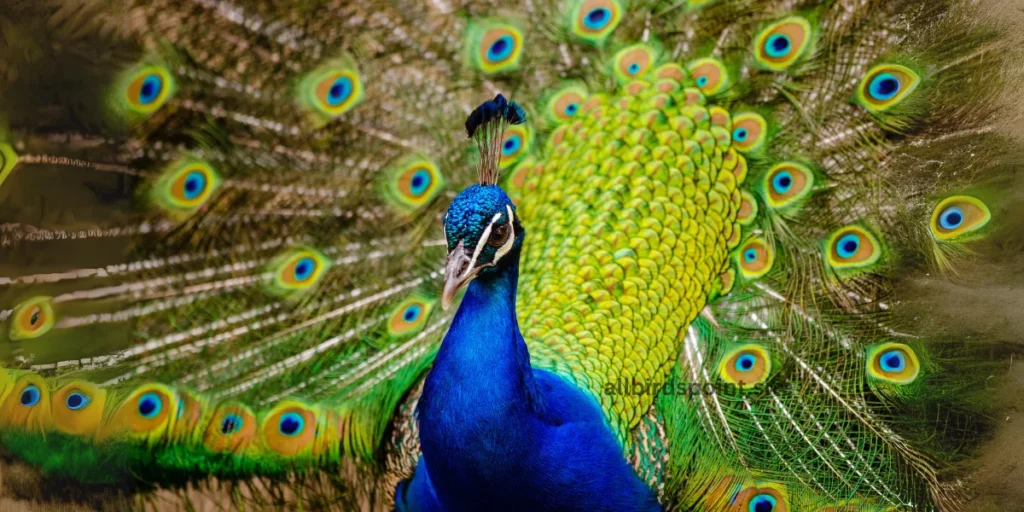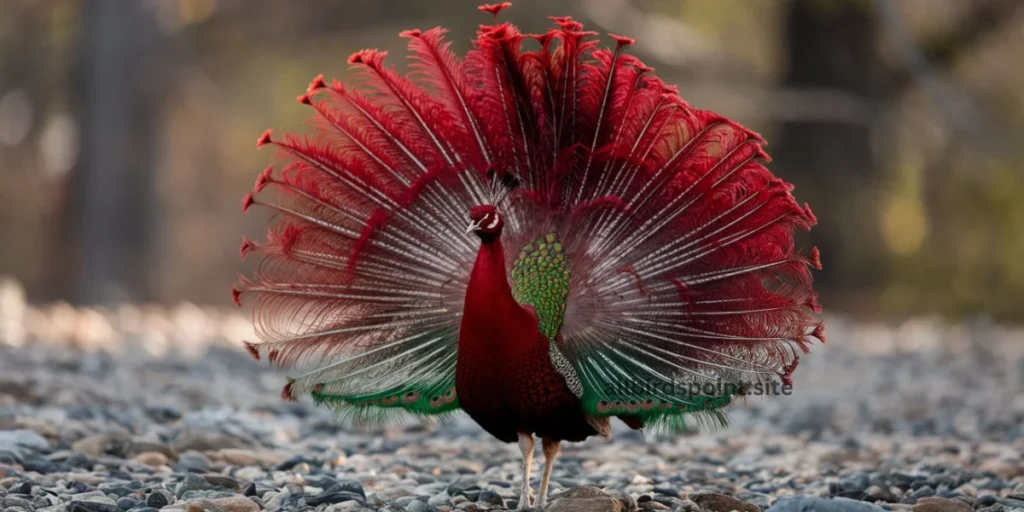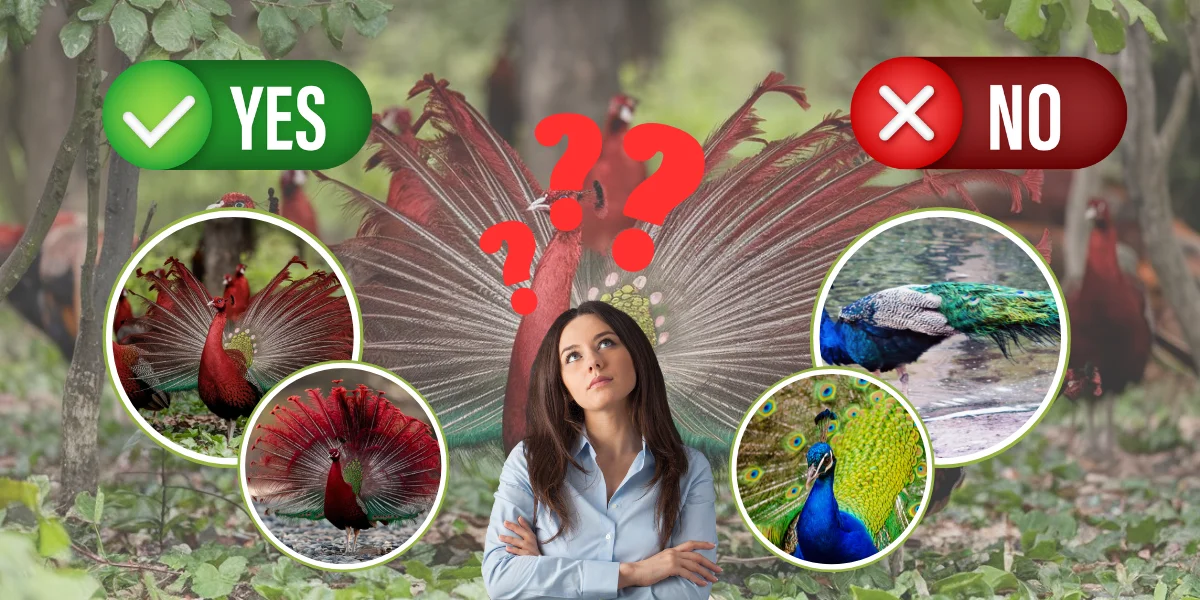Have you ever heard of a red peacock and wondered if they truly exist? Peacocks are known for their stunning blue and green feathers, but what about red ones? Some people say red peacocks are real, while others believe they are just myths or photoshopped images. In this article, we’ll explore whether these beautiful birds are real or just a made-up story. Keep reading to find out the truth about red peacocks!
Are Red Peacocks Real or Fake?
Red peacocks are not real. Peacocks naturally come in blue, green, and white varieties. The images of red peacocks you might see are either edited or artificially colored birds. In nature, there are no peacocks with red feathers.
A Complete Guide
Peacocks are one of the most recognized and admired birds on the planet, known for their stunning, colorful plumage and majestic display of tail feathers. The most common colors associated with peacocks are blue and green, but over the years, there have been rumors and online images suggesting the existence of red peacocks. So, are red peacocks real or fake? This comprehensive guide will explore everything you need to know about peacocks, their natural colors, and whether or not red peacocks exist.

What Is a Peacock?
A peacock is the male of the species known as peafowl, a large bird that is native to the Indian subcontinent and other parts of Asia. There are three primary species of peafowl:
- Indian Peafowl (Pavo cristatus)
- Green Peafowl (Pavo muticus)
- Congo Peafowl (Afropavo congensis)
Peacocks are famous for their bright and colorful tail feathers, which they fan out in an eye-catching display. This display is primarily used for courtship rituals to attract females, known as peahens.
Species of Peafowls
To understand the concept of red peacocks better, it is essential to know more about the different types of peafowls. Each type has its own natural coloration and habitat. Below is a detailed look at each species.
1. Indian Peafowl

The Indian peafowl is the most recognized and commonly found species. They are native to India and Sri Lanka, and you can also find them in many zoos and private collections around the world.
- Color: The males, or peacocks, are known for their bright blue bodies and vibrant green tail feathers. Their tail feathers have iridescent “eyes” with shades of blue, gold, and green, which they fan out during courtship.
- Habitat: Indian peafowls live in open forests, farmlands, and grasslands.
- Behavior: They are very social birds and often found in groups. They feed on seeds, insects, and small animals.
| Attribute | Details |
|---|---|
| Common Name | Indian Peafowl |
| Scientific Name | Pavo cristatus |
| Native Habitat | India, Sri Lanka |
| Lifespan | 15-20 years in the wild; up to 25 years in captivity |
| Diet | Omnivorous: seeds, insects, small animals, fruits |
| Coloration | Blue body with green and blue iridescent tail feathers |
| Size | 100-115 cm (body), tail up to 150 cm |
| Weight | 4-6 kg (males) |
| Behavior | Social, lives in groups |
| Conservation Status | Least Concern |
2. Green Peafowl

Green peafowl are less common and are found primarily in Southeast Asia, including Thailand, Myanmar, and parts of China. They are considered a more endangered species than the Indian peafowl.
- Color: The males have green and gold feathers with a slightly less dramatic display of tail feathers compared to Indian peafowls. The overall body color is green, and their tail feathers are a mix of green, bronze, and blue.
- Habitat: They are found in dense forests and tropical areas.
- Behavior: Unlike Indian peafowls, green peafowls are more solitary. They are shy and harder to observe in the wild.
| Attribute | Details |
|---|---|
| Common Name | Green Peafowl |
| Scientific Name | Pavo muticus |
| Native Habitat | Southeast Asia: Myanmar, Thailand, Cambodia, Vietnam |
| Lifespan | 15-20 years in the wild; up to 25 years in captivity |
| Diet | Omnivorous: insects, plants, seeds, small reptiles |
| Coloration | Green body with gold, bronze, and iridescent tail feathers |
| Size | 100-120 cm (body), tail up to 160 cm |
| Weight | 3-5 kg (males) |
| Behavior | Solitary or in pairs |
| Conservation Status | Endangered |
3. Congo Peafowl

The Congo peafowl is the least known of the three species and is native to the Congo Basin in Central Africa.
- Color: Unlike the bright blue or green Indian and green peafowls, the Congo peafowl has darker feathers, usually a mix of deep blue, black, and green. They do not have the large, dramatic tail displays of other peafowl species.
- Habitat: They live in dense, tropical rainforests and are very secretive birds.
- Behavior: Congo peafowls are primarily ground-dwelling birds and are difficult to observe due to their reclusive nature.
| Attribute | Details |
|---|---|
| Common Name | Congo Peafowl |
| Scientific Name | Afropavo congensis |
| Native Habitat | Congo Basin, Central Africa |
| Lifespan | 15-20 years in the wild; up to 23 years in captivity |
| Diet | Omnivorous: fruits, seeds, small invertebrates |
| Coloration | Dark blue body with green, black, and bronze feathers |
| Size | 64-70 cm (body), smaller tail feathers |
| Weight | 2.5-4 kg (males) |
| Behavior | Mostly ground-dwelling, shy |
| Conservation Status | Vulnerable |
Natural Colors of Peacocks
Peacocks are known for their brilliant display of colors, but these colors are naturally limited to blue, green, and in some cases, white. The colorful appearance of their feathers is due to iridescence, a phenomenon where light reflects off the microscopic structures in the feathers, creating a rainbow-like effect. Here’s a closer look at the natural color variations found in peafowls.
1. Blue Peafowls
The blue peacock, or Indian peafowl, is the most common type. Their vibrant blue body and greenish-blue tail feathers make them one of the most recognizable birds in the world. The “eyes” on their tail feathers are a combination of blues, greens, and golds, adding to their spectacular appearance.
2. Green Peafowls
The green peafowl is less colorful than its Indian counterpart but still stunning. Their feathers are primarily green, with hints of bronze and gold. They are not as widely known or seen due to their endangered status, and they are often more elusive than the blue peafowls.
3. White Peafowls
White peafowls are not a separate species but rather a genetic mutation called leucism, which results in a loss of pigmentation in their feathers. White peafowls have pure white feathers and are sometimes mistaken for albino birds, although they still have normal-colored eyes. White peafowls are often bred in captivity and are considered rare.

Where Does the Myth of Red Peacocks Come From?
The idea of a red peacock is appealing because red is a bold, striking color that many people find attractive. However, the red peacock is not a real bird species. The concept of red peacocks most likely stems from:
1. Digital Manipulation and Photoshop
With the rise of image-editing software, it’s become easy to alter photographs of animals. Many images of red peacocks that circulate online are simply edited versions of existing peacock photos. This can involve changing the hue of the bird’s feathers to give them a red or pinkish appearance.
2. Artificial Dyeing
In some cases, birds may be artificially dyed for specific events or exhibitions. While this is rare, it is possible that someone may have dyed a peacock’s feathers red, leading to the myth that red peacocks exist in nature.
3. Misleading Descriptions
Some people may misinterpret certain color mutations in peafowls and describe them as “red.” For example, in certain lighting conditions, the iridescence of a peacock’s feathers may give off a reddish tint, but this does not mean the feathers are actually red.
Peafowl Color Mutations: What Are the Possibilities?
While red peacocks do not exist, there are several other color mutations in peafowls that are quite rare. These mutations are the result of selective breeding, primarily in captivity. Here are some of the most common mutations:
| Mutation | Description |
|---|---|
| White Peafowl | The most common color mutation, caused by leucism, leading to all-white feathers. They are not albino but have normal-colored eyes. |
| Pied Peafowl | These birds have a mix of normal blue and green feathers along with patches of white. |
| Purple Peafowl | A mutation that produces a light purple hue on the bird’s feathers, though the effect is subtle. |
| Opal Peafowl | A rare mutation that results in grayish-blue feathers, giving the bird a softer, pastel-like appearance. |
| Black-Shouldered Peafowl | This mutation affects the wing and shoulder area, making the feathers appear darker or completely black, but the rest of the bird remains blue or green. |
As seen in the table above, peafowls can come in various shades and patterns, but none of these mutations produce red feathers.
Peafowls in Mythology and Culture
Peacocks have been part of human culture for centuries. They are often associated with beauty, immortality, and royalty. In some cultures, peacocks are considered symbols of luck and prosperity.
- In Hinduism, the peacock is the national bird of India and is associated with several deities, including Lord Krishna and Saraswati, the goddess of wisdom and learning.
- In Greek mythology, the peacock was sacred to Hera, the queen of the gods, and its tail feathers were believed to represent the eyes of Argus, a giant with many eyes.
- In Christianity, peacocks have been used as symbols of resurrection and eternal life.
The appeal of a red peacock could stem from these cultural associations, as red is often a symbol of passion, strength, and vitality in many cultures.
The Fascination with Rare Birds
The allure of rare or unique birds, like the idea of a red peacock, is not new. People have long been fascinated with exotic animals, and birds, in particular, have been a focus due to their diverse colors, shapes, and sizes. Birds like the Scarlet Macaw and the Flamingo are beloved for their vibrant red and pink feathers, which may be one reason why people hope red peacocks exist.
Red Birds in Nature
While red peacocks are not real, there are several other birds that naturally have red feathers. Some of these include:
| Bird Name | Color | Location |
|---|---|---|
| Scarlet Macaw | Bright red with blue and yellow | Central and South America |
| Cardinal | Deep red feathers | North America |
| Flamingo | Pinkish-red feathers | South America, Africa, parts of Asia |
| Red Lory | Bright red with black accents | Southeast Asia and Australia |
These birds show that while red is a beautiful and striking color in nature, it does not occur in peafowls.
Conclusion: Are Red Peacocks Real?
After thoroughly examining the evidence, it’s clear that red peacocks are not real. The images and stories circulating about red peacocks are either digitally altered or involve artificially colored birds. Peafowls naturally come in blue, green, and white variations, but there are no naturally occurring red peacocks.
The idea of a red peacock may be appealing because of its rarity and boldness, but the natural beauty of peafowls should not be overlooked. The stunning colors of blue, green, and white peacocks are already a marvel of nature, and no artificial embellishments are needed to appreciate their beauty.
FAQs
1. Can peacocks change their feather colors?
No, peacocks cannot change their colors. Their feathers are naturally iridescent, meaning they reflect light differently depending on the angle, but their colors remain consistent.
2. Why do some people think red peacocks exist?
The myth of red peacocks likely comes from digitally altered images or artificially dyed birds. There are no naturally red peacocks in the wild.
3. What is the rarest color of peafowl?
The white peafowl, caused by a genetic mutation known as leucism, is considered one of the rarest color variations in peafowls.
4. Are there any birds with red feathers similar to peacocks?
While peacocks do not come in red, other birds, such as the Scarlet Macaw, Cardinal, and Red Lory, are known for their striking red feathers.

1 thought on “Are Red Peacocks Real or Fake? Discover the Truth Now!”